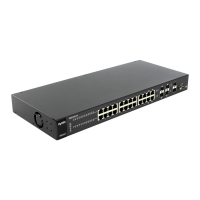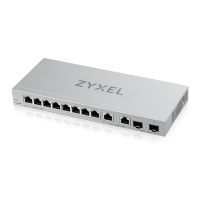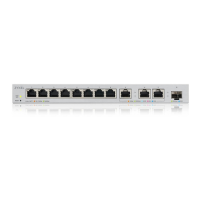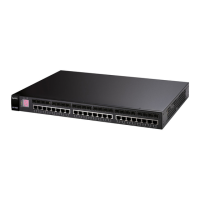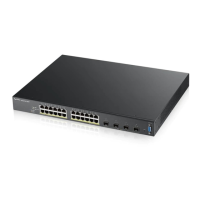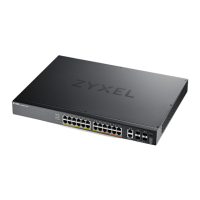Chapter 8 Basic Setting
XGS1930 Series User’s Guide
97
8.10.7 IPv6 Neighbor Discovery Setup
Use this screen to configure neighbor discovery settings for each interface. Click the link next to IPv6
Neighbor Discovery Setup in the IPv6 Configuration screen to display the screen as shown next.
Figure 74 Basic Setting > IPv6 > IPv6 Configuration > IPv6 Neighbor Discovery Setup
The following table describes the labels in this screen.
Add Click Add to save your changes to the Switch’s run-time memory. The Switch loses these changes
if it is turned off or loses power, so use the Save link on the top navigation panel to save your
changes to the nonvolatile memory when you are done configuring.
Cancel Click Cancel to begin configuring this screen afresh.
Clear Click Clear to reset the fields to the factory defaults.
Index This is the interface index number. Click on an index number to change the settings.
Interface This is the name of the IPv6 interface you created.
IPv6 Global
Address/Prefix
Length
This field displays the IPv6 global address and prefix length for the interface.
EUI-64 This shows whether the interface ID of the global address is generated using the EUI-64 format.
Select an entry’s check box to select a specific entry. Otherwise, select the check box in the
table heading row to select all entries.
Delete Check the entry(ies) that you want to remove and then click Delete to remove the selected
entry(ies) from the summary table.
Cancel Click Cancel to clear the check boxes.
Table 39 Basic Setting > IPv6 > IPv6 Configuration > IPv6 Global Address Setup (continued)
LABEL DESCRIPTION
Table 40 Basic Setting > IPv6 > IPv6 Configuration > IPv6 Neighbor Discovery Setup
LABEL DESCRIPTION
Interface Select the IPv6 interface you want to configure.
DAD Attempts The Switch uses Duplicate Address Detection (DAD) with neighbor solicitation and advertisement
messages to check whether an IPv6 address is already in use before assigning it to an interface,
such as the link-local address it creates through stateless address autoconfiguration.
Specify the number of consecutive neighbor solicitations (from 0 to 600) the Switch sends for this
interface. Enter 0 to turn off DAD.

